Trade Dollar
1873 to 1885
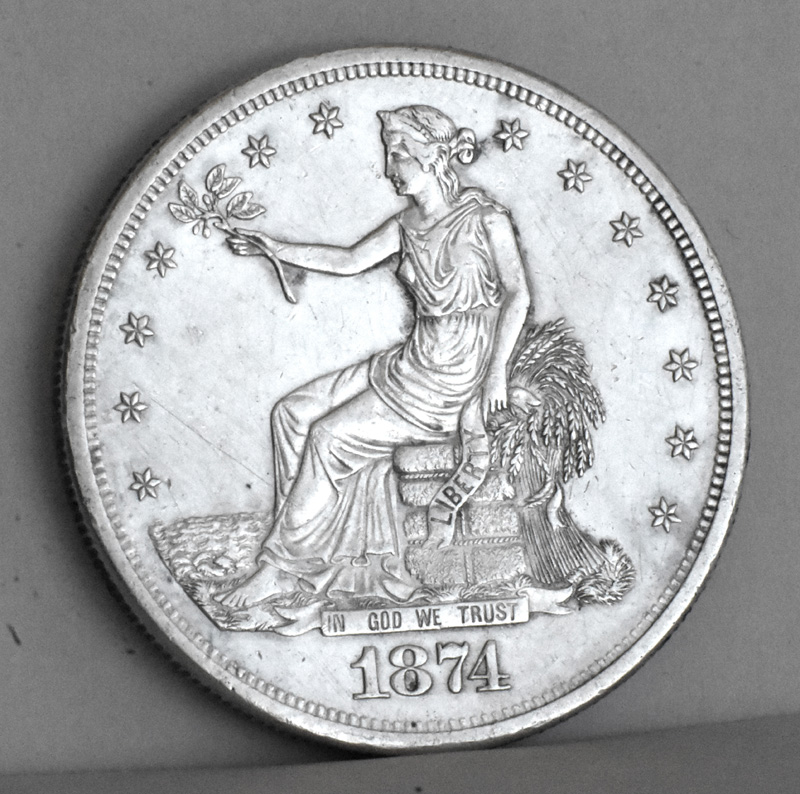 |
During the first part of the 19th century, there was a need to increase the silver content of the dollar in order to be more competitive with Europe in trade with Japan. Thus, in 1873 the Trade dollar appeared, which was .49 grains (0.32 grams or about 0.001 ounces) heavier. When citzens began demanding its use for ordinary commerce, the government agreed, but only for purchases of $5 or less. This caused much confusion and in 1878 a new Trade dollar was downsized to previous standards for use domestically and for a year, both types were minted causing much dissatisfaction. Finally, the Trade dollar was discontinued in 1885 but only proofs were made after 1878. And the coins made in 1884 and 1885 are among the rarest of all U. S. coins with only 10 and 5 minted in those years respectively. I recently saw an 1884 for sale on Ebay for $460,000. |  |
| This coin above was sold as an AU and it does appear that it qualifies for that grade. If so, it is worth about $325 and although the coin may have been cleaned, it is in sufficient demand to warrant a value close to that amount. About 2 1/2 million of these were minted. | This is the reverse of the coin at left. I also have an 1874 (minted in Philadelphia) coin in EF 40 grade stored in the D case. Only 987,100 of those were minted. | |
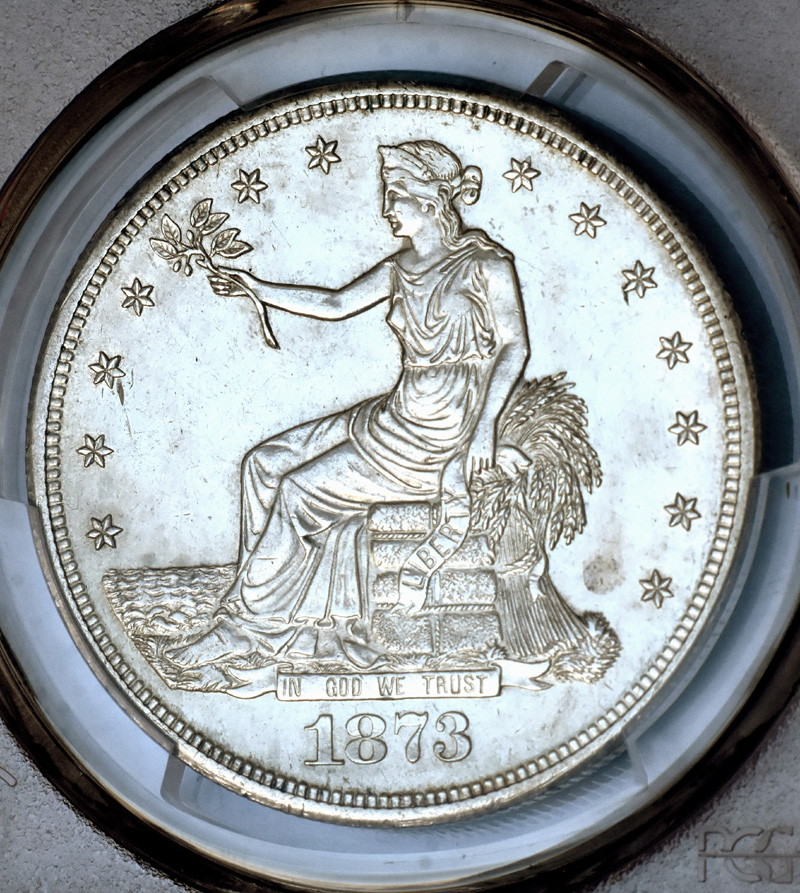 |
The German word taler began in the 1530s when new silver mines opened and coins were minted there. The name was also spelled thaler and was used for silver coins weighing about 1 ounce. Soon, because of the development of new silver deposits and the popularity of the coins, they were used widely throughout the states and territories of the Holy Roman Empire and the Habsburg monarchy. The corresponding English coin of the time was the crown. The English morphed the word thaler into daler by 1550 and dollar by 1600. In 1871 the German empire stopped making silver thaler coins and this resulted in a lower demand for the metal, causing a corresponding lower value for silver. |
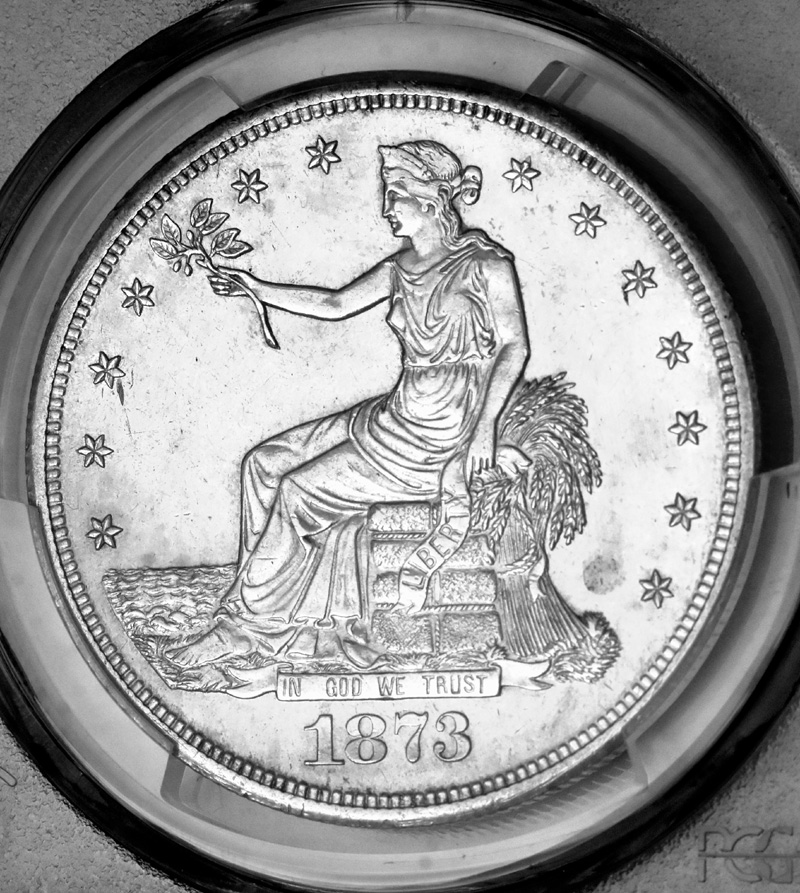 |
| This coin above is an example from the first year that the Trade dollars were minted and is from the San Francisco mint. The coin is certified as uncirculated and it cost me $1435, which is less than the current PCGS price guide value of $1950 but the coin has been cleaned and this is the reason for the discount. The mintage was 703,000. | This is the same coin as the one at left but I removed the color in order to compare the coin with the others on this page. | |
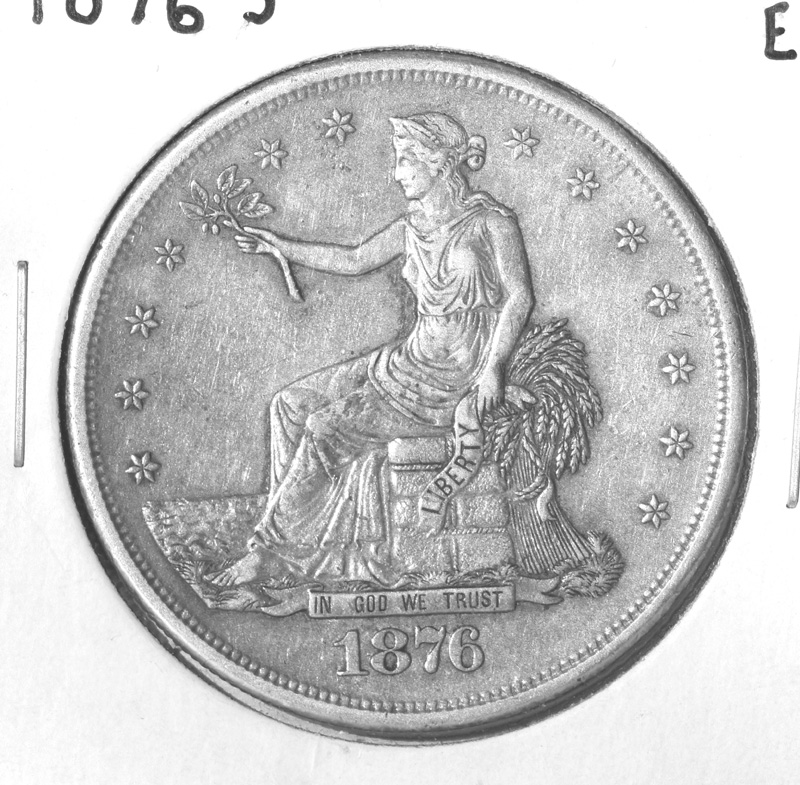 |
Since much of the supply was at that time coming from mines in the U.S., the congress decided to stop using silver (gold was still used) to back its money and passed The Coinage Act of 1873, which basically changed the nation to a gold standard, as the sole backing for currency. Consequently, no silver dollar coins were made from 1873 to 1878 except for the Trade dollars made for commerce with Europe. The Coinage Act reduced the domestic money supply while also causing a significant reduction in the price of silver which, added to other factors, led to the ‘panic of 1873’, which was triggered by the failure of Jay Cooke and Company on September 18 and amplified by the subsequent failures of other banks. |
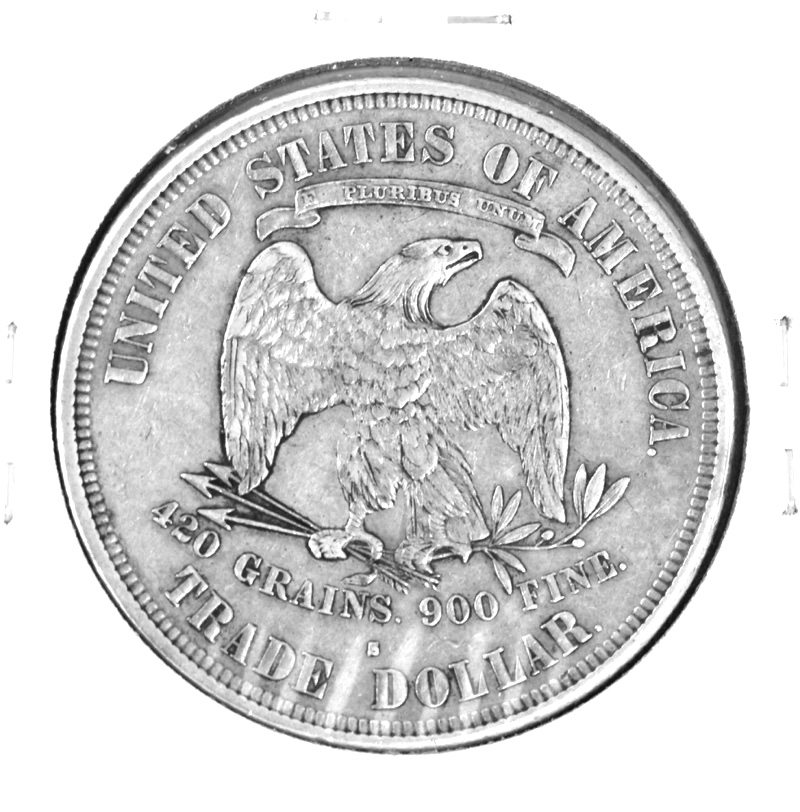 |
| The 1876 S example above was purchased in Seattle in 2020 for $305 and it does appear to qualify for the grade of EF which justifies that price. I also have an album for these coins but do not expect to fill it because of the cost of the ones I don't have. | This is the reverse of the coin at left. I imaged it with a window behind me and it made some small light streaks on the bottom. | |
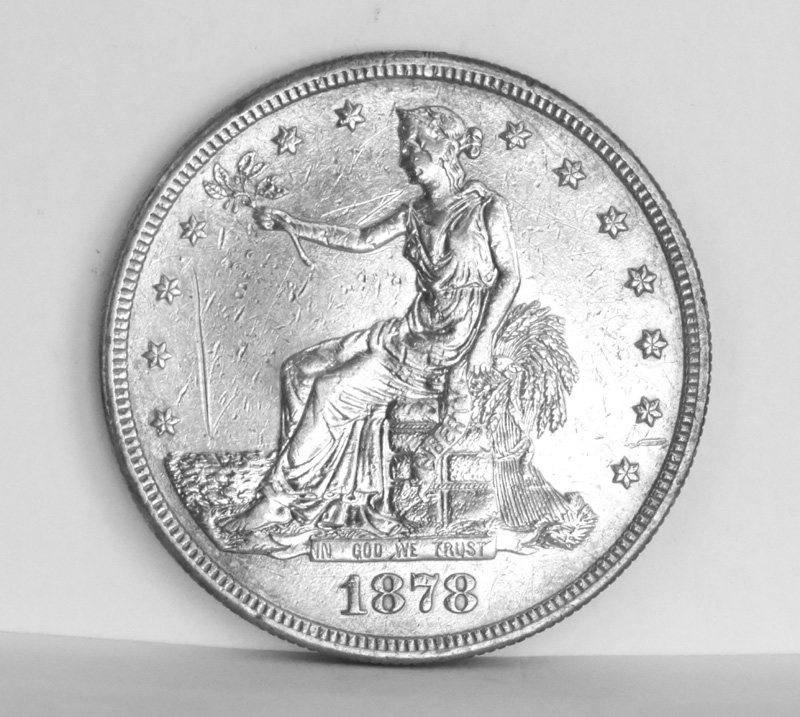 |
On September 20 th the New York market closed for 10 days and the country slipped into a depression. Eventually 115 railroads and 18,000 businesses failed. It was early in 1879 before the nation once again recovered from its economic woes, although the San Francisco and Carson City mints did began making silver dollars again (the Morgan was born) in 1878. The 1873 depression also fell upon Europe and its effects in France and Britain lasted longer, although the causes of their economic problems were exacerbated by other factors, including the opening of the Suez Canal in 1869. |
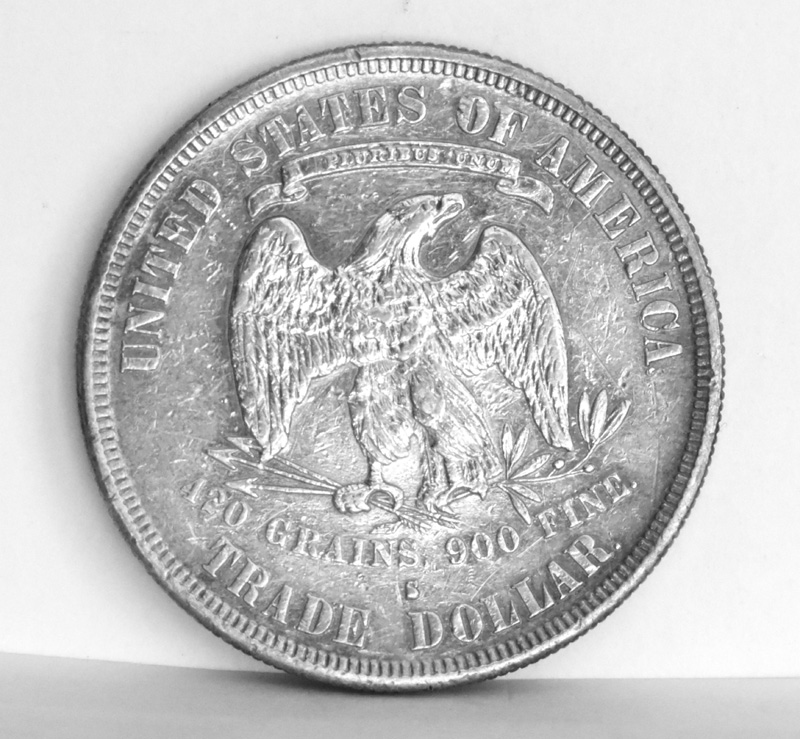 |
| My 1878 S example above cost $105 and is worth at least $200 today. I bought it ungraded but I believe it to be an VF. This coin is in the U.S. types album. | This is the reverse side of the coin at left. | |
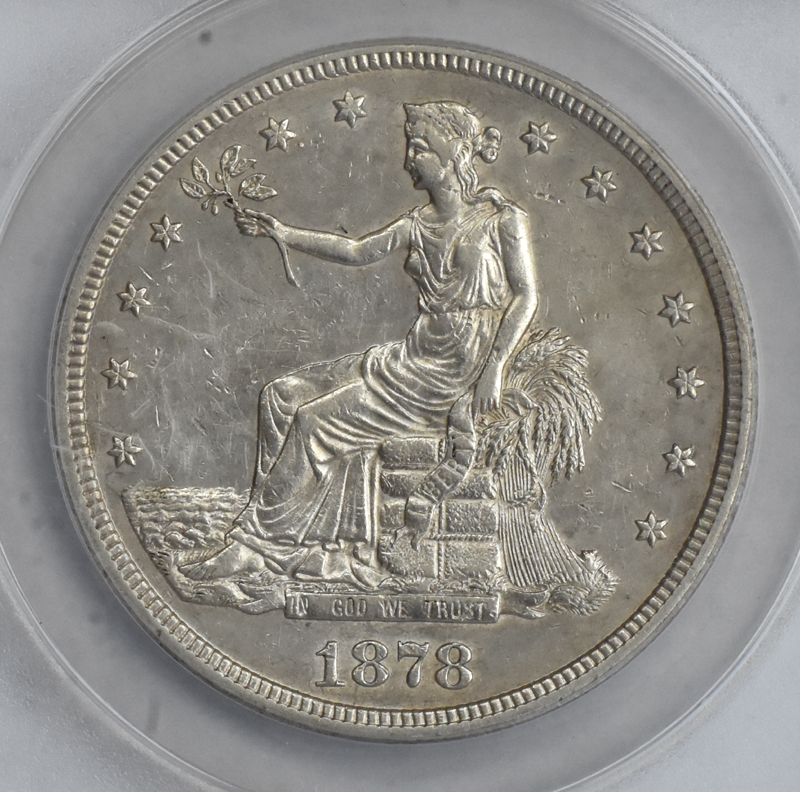 |
At left is an 1878 S Trade dollar that I purchased for the Trade dollar album. The coin has been certified as an AU 55 and I include a photo of the slab at the right. ANACS says the coin has been cleaned and I was tempted to remove it from the slab and give it another cleaning but have decided not to do that as of this writing. The coin is stored in the Red Box in SDB 508. It cost me $377 but the PCGS price list shows its value at a coin dealer as $475. | 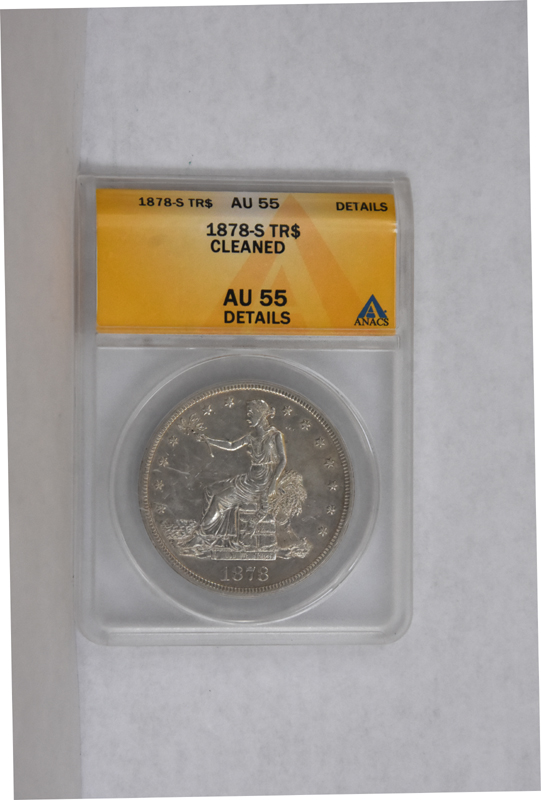 |
| 1874: March 18: Hawaii signs a treaty with the United States granting exclusive trading rights. May 20: Levi Strauss and Jacob Davis receive a U.S. patent for blue jeans with copper rivets. The price is $13.50 per dozen. July 1: Four-year-old Charley Ross, America's first major kidnapping for ransom victim, is taken from his home in Philadelphia. November 4: Democrats regain the U.S. House of Representatives for the first time since 1860. November 7: Harper's Weekly publishes a political cartoon by Thomas Nast considered the first important use of an elephant as a symbol for the Republican Party. November 24: Inventor Joseph Glidden patents barbed wire. |
| 1878: February 18: The Lincoln County War begins in Lincoln County, New Mexico. February 19: The phonograph is patented by Thomas Edison. February 23: The Bland-Allison Act is passed by congress, leading to the first minting of the Morgan dollar coin. April 4: The Gunfight at Blazer's Mill occurs in Lincoln County, New Mexico. June 18: The Posse Comitatus Act is signed into law to limit the powers of the federal government of the United States in using the United States Army to enforce domestic policy within the U.S. July 12: Yellow fever epidemic begins in New Orleans. It will eventually kill 4,500 people. July 26: In California, the poet and American West outlaw calling himself "Black Bart" makes his last clean getaway when he steals a safe box from a Wells Fargo stagecoach. The empty box is found later with a taunting poem inside. August 9: The Wallingford Tornado of 1878 destroys the town of Wallingford, killing 34 people, injuring 70 or more, and becomes the deadliest tornado in Connecticut history. Undated: Yellow fever in Mississippi Valley kills over 13,000. Albert Augustus Pope's Pope Manufacturing Company begins producing the Columbia high-wheel bicycle outside Boston, signaling the beginning of a bicycle craze in the U.S. The Remington No. 2 typewriter, the first with a shift key enabling production of lower as well as upper case characters, is introduced. |